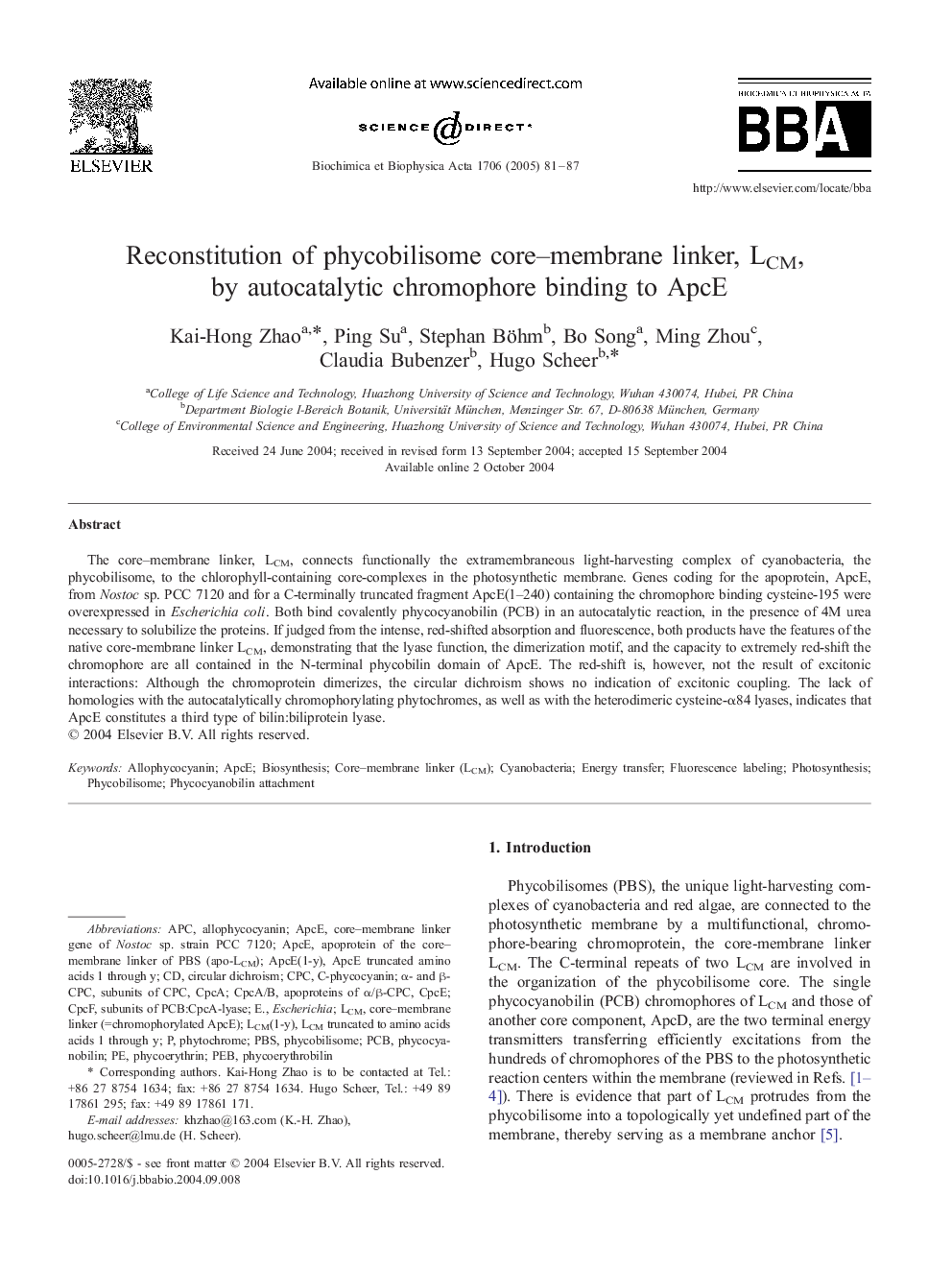| Article ID | Journal | Published Year | Pages | File Type |
|---|---|---|---|---|
| 9884707 | Biochimica et Biophysica Acta (BBA) - Bioenergetics | 2005 | 7 Pages |
Abstract
The core-membrane linker, LCM, connects functionally the extramembraneous light-harvesting complex of cyanobacteria, the phycobilisome, to the chlorophyll-containing core-complexes in the photosynthetic membrane. Genes coding for the apoprotein, ApcE, from Nostoc sp. PCC 7120 and for a C-terminally truncated fragment ApcE(1-240) containing the chromophore binding cysteine-195 were overexpressed in Escherichia coli. Both bind covalently phycocyanobilin (PCB) in an autocatalytic reaction, in the presence of 4M urea necessary to solubilize the proteins. If judged from the intense, red-shifted absorption and fluorescence, both products have the features of the native core-membrane linker LCM, demonstrating that the lyase function, the dimerization motif, and the capacity to extremely red-shift the chromophore are all contained in the N-terminal phycobilin domain of ApcE. The red-shift is, however, not the result of excitonic interactions: Although the chromoprotein dimerizes, the circular dichroism shows no indication of excitonic coupling. The lack of homologies with the autocatalytically chromophorylating phytochromes, as well as with the heterodimeric cysteine-α84 lyases, indicates that ApcE constitutes a third type of bilin:biliprotein lyase.
Keywords
Related Topics
Life Sciences
Agricultural and Biological Sciences
Plant Science
Authors
Kai-Hong Zhao, Ping Su, Stephan Böhm, Bo Song, Ming Zhou, Claudia Bubenzer, Hugo Scheer,
